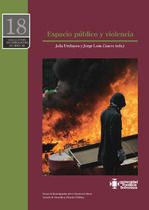| dc.contributor.author | León Casero, Jorge | |
| dc.contributor.author | Cano Suñén, Enrique | |
| dc.date.accessioned | 2021-06-16T21:23:29Z | |
| dc.date.available | 2021-06-16T21:23:29Z | |
| dc.date.issued | 2020 | |
| dc.identifier.isbn | 978-958-764-868-3 (versión digital) | |
| dc.identifier.uri | http://hdl.handle.net/20.500.11912/8709 | |
| dc.description | 22 páginas | spa |
| dc.description.abstract | Urban violence is normally analyzed from socio-symbolic positions in which the political significance of the city (polis) prevails over its character as a constructed material artifact. From this ethical-legal horizon of interpretation, the difference established by Walter Benjamin between violence that is founding, conservative or destructive of law has been left at a dead end –unable to conceptualize a purely extra-legal violence understood as something other than the expression of subjective and personal anger conceived as an explosive manifestation of meaningless energy that would serve no purpose nor be a means to any end. | spa |
| dc.format.mimetype | application/pdf | |
| dc.language.iso | spa | |
| dc.publisher | Universidad Pontificia Bolivariana | spa |
| dc.rights | Attribution-NonCommercial-NoDerivatives 4.0 International | * |
| dc.rights.uri | http://creativecommons.org/licenses/by-nc-nd/4.0/ | * |
| dc.subject | Espacio público – Violencia | spa |
| dc.subject | Violencia urbana | spa |
| dc.subject | Democracia | spa |
| dc.title | Tecnologías de la violencia urbana: la insuficiencia de las críticas a la violencia de Walter Benjamin, Peter Sloterdijk y Slavoj Žižek | spa |
| dc.title.alternative | Urban violence technologies: the insufficiency of the critiques of violence in Walter Benjamin, Peter Sloterdijk and Slavoj Žižek | spa |
| dc.type | bookPart | spa |
| dc.description.sectional | Medellín | spa |


